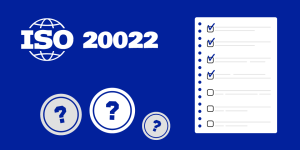The United Nations International Children’s Emergency Fund (UNICEF) stands as an emblematic pillar of global humanitarian efforts. Established with the primary aim of ensuring child welfare and safeguarding their rights, UNICEF has, over the years, emerged as a beacon of hope for millions. Its operations, which span across the length and breadth of the world, touch upon diverse spheres, from education and health to emergency response and advocacy for policy reforms. This Cryptopolitan guide aims to provide a detailed insight into UNICEF’s strategic move to integrate cryptocurrency into its operations, marking a defining moment in the agency’s long-standing commitment to embracing innovation for a brighter global future.
The Crypto Evolution: Why it Matters to UNICEF
Cryptocurrencies, since their inception, have predominantly been viewed through the lens of finance and investment. They heralded a new era of digital financial transactions, redefining the very notions of currency, value transfer, and financial autonomy. However, beyond the financial sector, the transformative potential of these digital assets has gradually permeated various domains, particularly those of humanitarian endeavors and global outreach.
UNICEF, with its global stature and commitment to innovation, was quick to discern the myriad possibilities that cryptocurrencies present. The decentralized nature of cryptocurrencies, underpinned by blockchain technology, offers a robust framework for transparent, tamper-proof, and efficient transactions. For an organization of UNICEF’s scale, which routinely handles vast amounts of funds, these attributes are invaluable. Not only do they ensure that funds reach their intended recipients without undue interference or delay, but they also bolster the organization’s credibility by providing verifiable transaction trails.
Furthermore, the global reach of cryptocurrencies, unhindered by geopolitical boundaries, resonates with UNICEF’s own international mandate. By harnessing the power of cryptocurrencies, UNICEF can transcend traditional banking constraints, enabling a more seamless flow of resources across countries and continents. This is especially crucial in scenarios where immediate financial response is imperative, such as natural disasters or conflict zones, where conventional banking mechanisms might falter or be inaccessible.
The ethos of cryptocurrencies, characterized by decentralization and community-driven consensus, mirrors UNICEF’s democratic spirit. By integrating this digital asset class into its operations, UNICEF is not just staying abreast of technological advancements but is also reinforcing its commitment to transparency, adaptability, and the unwavering pursuit of its humanitarian objectives.
The Birth of the UNICEF CryptoFund
October 2019 marked a significant milestone in UNICEF’s history of financial innovations. Embracing the digital age’s call, the organization announced the establishment of its CryptoFund. This initiative, while groundbreaking in the context of intergovernmental organizations, was not a hasty leap into the unknown; rather, it was a calculated and strategic response to the evolving landscape of global finance.
The fundamental ethos behind the creation of the CryptoFund was multifaceted. Foremost among its goals was the capacity to receive, hold, and disburse donations in the form of cryptocurrencies, primarily Bitcoin and Ether. Such a mechanism ensured that UNICEF could cater to an expanding demographic of donors who preferred the immediacy and transparency of cryptocurrency transactions over traditional means.
Moreover, this move signaled a broader shift within the United Nations system. UNICEF’s CryptoFund was not merely an isolated project but represented a pioneering step for the entire United Nations. By integrating cryptocurrency into its financial mechanisms, UNICEF showcased adaptability and a readiness to engage with modern technological solutions to further its humanitarian mission.
From a logistical standpoint, the CryptoFund provided UNICEF with a streamlined mechanism for handling cryptocurrency transactions. Operating as a pooled fund for Bitcoin and Ether, the fund adopted a holistic approach, ensuring both operational efficiency and alignment with the broader objectives of cryptocurrency usage.
Connection with UNICEF’s Innovation Fund
UNICEF, since its inception, has demonstrated a continuous commitment to innovation. Over the years, the organization has spearheaded various initiatives to harness the power of technology, and the creation of the Innovation Fund was a significant step in this direction. The Innovation Fund, an ambitious project, seeks to identify, fund, and scale open-source solutions that benefit children in diverse settings. It underscores UNICEF’s commitment to leverage emerging technologies for the welfare of children worldwide.
The CryptoFund, as an integral component of the Innovation Fund, serves a dual purpose. First, it facilitates the exploration and adoption of digital currencies, thereby reflecting UNICEF’s recognition of cryptocurrencies’ potential to revolutionize the global financial landscape. Second, it provides a platform for investments made in cryptocurrencies, marking a strategic departure from the traditional fiat currency-dominated investment paradigm.
What sets the CryptoFund apart, however, is its nature of operation. While the broader Innovation Fund encompasses various technological domains, from drones to data science, the CryptoFund’s exclusive focus is on investments denominated in cryptocurrency. This distinction is not merely operational but also symbolic, highlighting the increasing significance and acceptance of cryptocurrency in mainstream organizational strategies.
Key Objectives of the CryptoFund
The establishment of the CryptoFund by UNICEF was not a mere foray into the world of digital currencies; it was a meticulously crafted strategy aimed at addressing several organizational objectives. This strategic move was anchored in three foundational pillars: transparency, efficiency, and embracing a digital-first approach.
Transparency in Operations
The crux of the blockchain technology, upon which cryptocurrencies operate, is its inherent transparency. Every transaction is logged, time-stamped, and can be accessed by anyone who wishes to review it. By adopting this technology, UNICEF’s CryptoFund introduced a system that allows for unparalleled visibility into donation and investment processes. Donors, recipients, and even the general public now have the capability to view how funds are received, held, and disbursed. This level of transparency can foster trust and ensure that funds are used effectively and ethically.
Operational Efficiency
The digital nature of cryptocurrency transactions offers a unique advantage – they are quick and can be considerably more cost-effective than traditional banking systems, especially for international transfers. Efficiency in this context goes beyond just the speed of transactions. It also pertains to the reduced costs associated with sending and receiving funds. For an organization like UNICEF, which operates on a global scale, these saved funds can be redirected to more pressing needs, further amplifying the impact of every donation.
Embracing a Digital-Forward Approach
The world is undeniably moving towards an increasingly digital future. By integrating a CryptoFund into its financial structure, UNICEF has demonstrated its commitment to staying abreast of technological advancements. This isn’t just about being trendy; it’s about understanding and preparing for a future where digital finances could become the norm. By gaining firsthand experience in managing and utilizing digital assets, UNICEF is positioning itself as a forward-thinking organization, ready to navigate the complexities of a digitally-dominated future.
The Rise of Donor Interest in Cryptocurrency
In recent years, a discernible shift has been observed in the philanthropic landscape. Donors, both institutional and individual, are increasingly expressing a preference for leveraging cryptocurrencies in their philanthropic endeavors. This evolution in donor behavior is multifaceted and speaks to both the advantages of the technology and the changing attitudes towards traditional financial systems.
The cryptocurrency realm, by its very nature, has always been associated with a degree of disruption, challenging the status quo. This ethos resonates with many philanthropists who seek innovative methods to amplify their impact. Cryptocurrencies, devoid of the bureaucratic tape and sometimes cumbersome processes of traditional banking systems, offer a streamlined, direct way to support causes.
One of the distinguishing characteristics of donating in cryptocurrency is the ability to maintain the donation in its native form. This means that a donation made in a particular cryptocurrency can be held and used in that very cryptocurrency, rather than being converted to fiat. There are inherent advantages to this approach. Apart from potentially mitigating the risks of currency exchange fluctuations, it also ensures that the transparent and traceable nature of blockchain is maintained throughout the lifecycle of the donation. Every step, from donation to deployment, can be monitored, fostering an enhanced level of trust between the donor and the recipient.
The beauty of blockchain lies in its open ledger system. This transparency, when applied to donations, revolutionizes the donor-recipient relationship. Donors no longer need to rely solely on periodic reports or updates; they can witness, in real-time, how their contribution is making a difference. This immediate access to information ensures a level of accountability that was previously hard to achieve.
Cryptocurrencies know no borders. In a world that is increasingly interconnected, the ability to send funds across the globe in a matter of minutes, with minimal fees, is invaluable. This efficiency ensures that funds reach their intended destination promptly, which is especially crucial in emergency situations or when timely interventions are necessary.
Expanding Horizons: UNICEF’s Exploration into DAO
As technological advancements continually redefine the landscape of global operations and collaborations, Decentralized Autonomous Organizations (DAOs) have emerged as a significant evolution in the realm of blockchain technology. With UNICEF at the forefront of integrating pioneering technologies to enhance its mission, the exploration into the potential of DAOs becomes an imperative discussion.
A Decentralized Autonomous Organization, commonly referred to as a DAO, operates on principles of transparency, decentralization, and automation, driven by smart contracts on a blockchain. The absence of centralized control in a DAO makes it a self-governing entity, where decisions are made collectively by its members, ensuring democratic participation and reducing the potential for centralized corruption or inefficiencies.
Harnessing the core capabilities of DAOs, UNICEF has embarked on the path of developing a DAO prototype tailored for Digital Public Goods. Digital Public Goods represent open-source digital solutions that play a pivotal role in equitable and universal access to information and opportunities. The integration of a DAO model in this sphere has the potential to revolutionize the way these digital assets are governed, managed, and further developed.
In its quest for optimal functionality and scalability, UNICEF opted to work with Polygon for testing its DAO concept. Polygon, recognized for its advanced framework and versatile solutions in the blockchain space, aligns with UNICEF’s vision for the DAO prototype. This collaboration aims to foster a seamless, efficient, and scalable model that can adapt to the demands of managing Digital Public Goods on a global scale.
Digital Public Goods (DPGs): The New Frontier
In the modern digital age, the value and potential of Digital Public Goods (DPGs) have come to the forefront, accentuating the necessity for equitable access to information, knowledge, and opportunities. As UNICEF anchors its efforts in leveraging technology for global progress, a comprehensive exploration of DPGs and their implications becomes paramount.
Digital Public Goods refer to open-source digital solutions and platforms that are accessible to all, without restrictions. These encompass software, data sets, algorithms, and more. Their primary aim is to benefit humanity at large by ensuring that digital advancements reach even the most marginalized communities, thus contributing to the global goals of equality and inclusivity.
The democratization of information and resources offered by DPGs can play a transformative role in addressing socio-economic disparities. From educational platforms that bridge knowledge gaps to healthcare solutions that transcend geographical barriers, DPGs have the power to catalyze positive change in myriad sectors. Their inherent nature of being universally accessible ensures that no individual, regardless of their socio-economic status, is left devoid of the opportunities presented by the digital revolution.
The vast array of DPGs present not only solutions to contemporary challenges but also the foundation for future innovations. By providing a platform where developers and innovators can collaboratively contribute, DPGs foster a continuous cycle of improvement and innovation. This dynamic nature ensures that these goods remain relevant, adaptive, and geared towards addressing emerging global challenges.
UNICEF’s exploration into the DAO prototype for DPGs underscores its recognition of the importance of decentralized governance in this sphere. By integrating the DAO model, the potential for enhancing communication, collaboration, and decision-making processes within the DPG community is amplified. Such a model ensures that the development and management of DPGs are truly in the hands of the global community, promoting shared ownership and responsibility.
UNICEF’s presence in the crypto realm has not been a solitary endeavor. The organization has engaged with an array of renowned crypto entities, establishing collaborations and partnerships that augment its crypto-based operations. This proactive approach not only widens UNICEF’s operational capacities but also signifies its recognition of the evolving digital financial landscape.
Beyond mere partnerships, UNICEF has fostered relationships with crypto start-ups, lending support and facilitating their endeavors to harness the potential of blockchain and crypto technologies for humanitarian causes. These relationships signify a symbiotic alliance where UNICEF benefits from the innovations these start-ups bring, while the latter gain from the vast global outreach and trust that UNICEF commands.
Closing thoughts
As we draw this discourse to a close, it becomes increasingly evident that UNICEF’s foray into the realm of cryptocurrency is not a mere dalliance with a contemporary trend, but a calculated, strategic move to optimize its mission in this digital era. Their proactive approach in harnessing the potential of digital assets underscores a commitment to innovation and an understanding of the profound shifts occurring in the global financial landscape.





